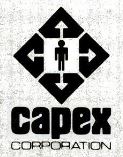
Multiple Virtual Storage, more commonly called MVS, is the most commonly used operating system on the System/370, System/390 and IBM Z IBM mainframe computers. IBM developed MVS, along with OS/VS1 and SVS, as a successor to OS/360. It is unrelated to IBM's other mainframe operating system lines, e.g., VSE, VM, TPF.

VSEn is an operating system for IBM mainframe computers, the latest one in the DOS/360 lineage, which originated in 1965. It is less common than z/OS and is mostly used on smaller machines.

z/OS is a 64-bit operating system for IBM z/Architecture mainframes, introduced by IBM in October 2000. It derives from and is the successor to OS/390, which in turn was preceded by a string of MVS versions. Like OS/390, z/OS combines a number of formerly separate, related products, some of which are still optional. z/OS has the attributes of modern operating systems but also retains much of the older functionality originated in the 1960s and still in regular use—z/OS is designed for backward compatibility.

The Lattice C Compiler was released in June 1982 by Lifeboat Associates and was the first C compiler for the IBM Personal Computer. The compiler sold for $500 and would run on PC DOS or MS-DOS. The first hardware requirements were given as 96KB of RAM and one floppy drives. It was ported to many other platforms, such as mainframes (MVS), minicomputers (VMS), workstations (UNIX), OS/2, the Commodore Amiga, Atari ST and the Sinclair QL.

CA Technologies, Inc., formerly Computer Associates International, Inc., and CA, Inc., was an American multinational enterprise software developer and publisher that existed from 1976 to 2018. CA grew to rank as one of the largest independent software corporations in the world, and at one point was the second largest. The company created systems software that ran in IBM mainframe, distributed computing, virtual machine, and cloud computing environments.
Interlink Computer Sciences, of Fremont, California, was a developer of hardware and software that allowed IBM mainframe computers running the MVS operating system to be connected to non-IBM networks.
Cincom Systems, Inc., is a privately held multinational computer technology corporation founded in 1968 by Tom Nies, Tom Richley, and Claude Bogardus.
Zenith Data Systems Corporation (ZDS), was an American computer systems manufacturing company active from 1979 to 1996. It was originally a division of the Zenith Radio Company, after they had purchased the Heath Company and, by extension, their Heathkit line of electronic kits and kit microcomputers, from Schlumberger in October 1979. ZDS originally operated from Heath's own headquarters in St. Joseph, Michigan. By the time Zenith acquired Heathkit, their H8 kit computer already had an installed fanbase of scientific engineers and computing enthusiasts. ZDS' first offerings were merely preassembled versions of existing Heathkit computers, but within a few years, the company began selling bespoke systems, including the Z-100, which was a hybrid Z80- and 8088-based computer capable of running both CP/M and MS-DOS.

Capex Corporation was an American computer software company in existence from 1969 through 1982 and based in Phoenix, Arizona. It made a variety of software products, mostly system utilities for the IBM mainframe platform, and was known for its Optimizer add-on to the IBM COBOL compiler. Capex was acquired by Computer Associates in 1982.

Operating System/Virtual Storage 1, or OS/VS1, is a discontinued IBM mainframe computer operating system designed to be run on IBM System/370 hardware. It was the successor to the Multiprogramming with a Fixed number of Tasks (MFT) option of System/360's operating system OS/360. OS/VS1, in comparison to its predecessor, supported virtual memory. OS/VS1 was generally available during the 1970s and 1980s, and it is no longer supported by IBM.

Mylex Corporation was an American computer company active from 1983 to 1999. The company mainly produced peripherals and expansion cards for personal computers—chiefly the IBM Personal Computer—for the bulk of its existence, although it also produced complete motherboards. In the mid-1990s the company focused on designing and manufacturing RAID controllers, eventually cornering 75 percent of the RAID controller market. In 1999, the company was acquired by and made a subsidiary of IBM for approximately $240 million. In 2002, IBM sold their Mylex division to LSI Logic for an undisclosed amount.
Edos is a discontinued operating system based upon IBM's original mainframe DOS. The name stood for extended disk operating system. It was later purchased by the West German computer company Nixdorf, who renamed it to NIDOS.
Informatics General Corporation, earlier Informatics, Inc., was an American computer software company in existence from 1962 through 1985 and based in Los Angeles, California. It made a variety of software products, and was especially known for its Mark IV file management and report generation product for IBM mainframes, which became the best-selling corporate packaged software product of its time. It also ran computer service bureaus and sold turnkey systems to specific industries. By the mid-1980s Informatics had revenues of near $200 million and over 2,500 employees.
Decision Data Computer Corporation, later Decision Industries Corporation and Decision Data Inc., was an American computer hardware company founded in 1969 and based in Horsham, Pennsylvania.
Intelligent Systems Corporation (ISC) was an American technology company that sold portable computers, video terminals, expansion cards, and other peripherals through a variety of manufacturing subsidiaries. Founded in 1973, the company restructured as a master limited partnership in 1987, becoming Intelligent Systems Master Limited Partnership.

Informer Computer Terminals, Inc., originally Informer, Inc., and later Informer Computer Systems, Inc., was a privately held American computer company active from 1971 to 2007. It manufactured data terminals that could communicate with mainframes and minicomputers, mainly those manufactured by IBM and Digital. It was originally based in Los Angeles, California; in the early 1980s, it moved to Laguna Beach, and in the late 1980s, to Garden Grove.
Pansophic Systems, Inc., or simply Pansophic, was a major American software company active from 1969 to 1991 and based in the Chicago metropolitan area. A pioneering software firm, it was among the first wave of independent software vendors in the late 1960s. Initially a supplier of source code and information management software for IBM mainframe computers with their flagship products Panvalet and Easytrieve, the company soon expanded into the minicomputer and personal computer markets, supplying application packages for many differing fields. The company was acquired by and absorbed into Computer Associates in October 1991 for nearly $300 million.
Parallan Computer, Inc., was an American computer company active from 1986 to 1999 and based in Mountain View, California. The company was best known for their line of servers and collaborations with IBM for the latter's PS/2 Server range. In 1994, the company merged with Meridian Data, Inc., assuming the latter's name and marketing CD-ROM servers before moving into the network-attached storage (NAS) market with the Snap! Server. In 1999, Quantum Corporation acquired Meridian Data for $85 million.
The Librarian is a version control system and source code management software product originally developed by Applied Data Research for IBM mainframe computers. It was designed to supplant physical punched card decks as a way of maintaining programs, but kept a card model in terms of its interface. During the 1970s and 1980s it was in use at thousands of IBM mainframe installations and was one of the best-selling software products in the computer industry.
Walker Interactive Products, earlier known as Jeffrey L. Walker & Company and later known as Walker Interactive Systems and then briefly Elevon, Inc., was an American software company of the late 1970s through the early 2000s that was known for making accounting software for large organizations. The Walker application packages in particular supported the purchase order and accounts payable functionalities, as well as general ledger, and were mainly sold for the IBM mainframe market. For most of its existence, the company was headquartered in the downtown area of San Francisco, California.








